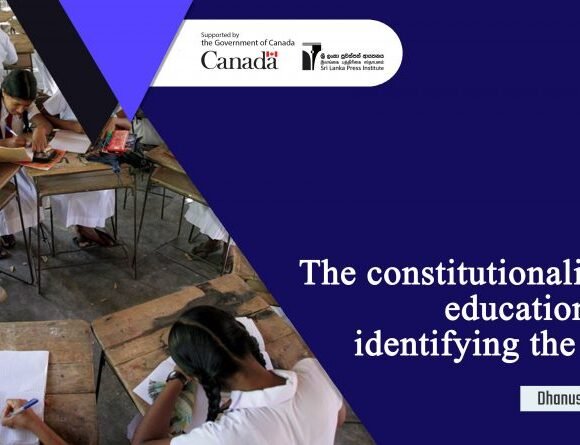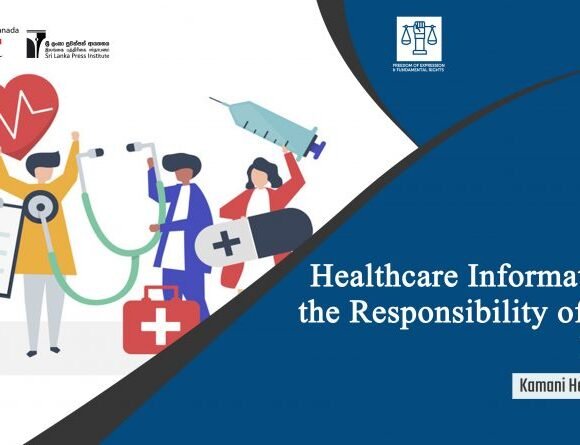
Let the Truth be Found and Written
(Written to Coincide with the International Day to End Impunity for Crimes against Journalists,
which falls on 2 November)
Sampath Deshapriya
In Sri Lanka, raising the sword of violence against the media has a long history. The media has had to deal with multiple pressures by political authorities and complex social forces that are nurtured under their care. The list of crimes committed against Sri Lankan journalists in the last few decades has kept on growing since the assassination of journalist Richard de Zoysa in February 1990. Before examining the indecent story of the Sri Lankan government which has given immunity to those responsible for crimes against the media, it is crucial to outline as to what constitutes a crime, and to look at the conventions which civilized human communities have drawn to eliminate them.
The Encyclopedia of Sociology defines a crime as “any action that is prohibited and punishable by law.” According to the Sri Lankan Penal Code, a crime is an offense that interferes with social welfare. In that context, from homicide to allowing a dog to go out without a leash falls within the rubric of what constitutes a crime. Despite its broad definition, the way the law has been moved concerning some recent crimes against journalists in Sri Lanka has left room for much debate. The following are some indicative examples:
- 2000.10.19. The assassination of Mylvanagam Nimalarajan: Judicial proceedings are to be completed.
- 2004.05.01. The assassination of Aiyathurai G. Nadesan. No progress following complaint.
- 2004.08.16. The assassination of Kandasamy Iyer. No progress following complaint.
- 2005.04.28. The assassination of Dharmaratnam Sivaram. Judicial proceedings are to be completed.
- 2005.08.12. The assassination of Relangi Selvaraja. No investigations.
- 2005.08.29. The bombing of the Sudar Oli newspaper. Complained but no progress.
- 2006.01.24. The assassination of Subramaniam Sugidharan. Judicial proceedings are to be completed.
- 2006.07.01. The assassination of Sampath Lakmal. Investigations have stalled.
- 2007.02.15. The disappearance of Subramaniam Ramachandran. Judicial proceedings are to be completed.
- 2007.12.27. The assault on T. M. G. Chandrasekara. Judicial proceedings are to be completed.
- 2008.01.25. The assault on Lal Hemantha Mawalage. Investigations are complete but no judicial action taken.
- Keith Noyer abduction and torture. Judicial action has been taken but is not over.
- 2008.05.28. The assassination of Rupasingham Deva Kumar. Judicial action has been taken but is not over.
- 2009.01.06. Destroying the Sirasa Media Complex using claymore mines. No progress following complaint.
- The assassination of Lasantha Wickrematunge. The editor of the Sunday Leader newspaper. Judicial action has been taken but is not over.
- 2009.06.01. Poddala Jayantha abduction and assault. Judicial action has been taken but is not over.
- 2010.07.10. Attack on Siyatha Media Company. No progress following complaint.
- 2011.02.01. Setting fire to the Lanka e-News Company. No progress following complaint.
- 2006.05.02. Setting fire to the Uthayan Newspaper Institute. No progress following complaint.
- 2013.08.23. Threatening journalist Mandana Ismail. Investigations have stalled.
As a country with democratic governance, we are a nation that is party to various international treaties, conventions, and agreements. Therefore, the Convention against Torture and Other Cruel, Inhuman or Degrading Treatment or Punishment of 1984 applies to Sri Lankan media practitioners, as well. The United Nations also recognizes torture as a crime against humanity and as an inalienable right. Its provisions have been amended to make it possible to prosecute a perpetrator in any country. In addition, Article 5 of the 1948 Universal Declaration of Human Rights and article 7 of the United Nations Convention on Civil and Political Rights of 1966 have taken steps to prevent torture. Governments have come to power using the chain of events mentioned earlier in this article as political slogans but have failed to punish responsible parties or deliver justice to the victims. In 2020, Sri Lanka ranked 127th internationally in the World Press Freedom Index. It’s a step down from 2019.
The observations made in this article demonstrate the fundamental rights of the journalists and media organizations in question to have been forcibly taken away by another party in a criminal manner. The right of every person to express an opinion is endorsed by the Constitution of Sri Lanka as well as the Universal Declaration. Also, the Supreme Court of this country has given several rulings considering freedom of speech and expression as a fundamental right. Although it was like that in the past, in recent years little has happened to the satisfaction of the United Nations and national and international civil society organizations where the law was enforced on crimes against media institutions and journalists. The absence or slowness of the legal process leaves little for individuals or groups who have committed crimes against the media to fear, or to prevent them from continuing such violence in the future.
Issues concerning media freedom, the judiciary, human rights transitions, and the miscarriage of justice in the country have received special attention of the United Nations Human Rights Council. Such attention is not good for the country. The recent gazette notification issued in connection with the Covid-19 pandemic has drawn international attention for its preventing protests. Subsequent arrests of social media activists who criticized the government based on the provisions of the gazette have drawn protest from activists, civil society, and the country’s intelligentsia. By providing immunity for crimes committed against journalists, the law enforcement and political authorities should not descend to the level of the Hammurabi code of laws in Babylonia in 1900 BC which were based on the principle of revenge. Its concept followed the concept of an “eye for an eye.” If the rule of law in crimes against journalists is not enforced under the Hammurabi code of laws but according to accepted codes of the civilized world, Sri Lanka will be able to stand tall among modern nation states.








